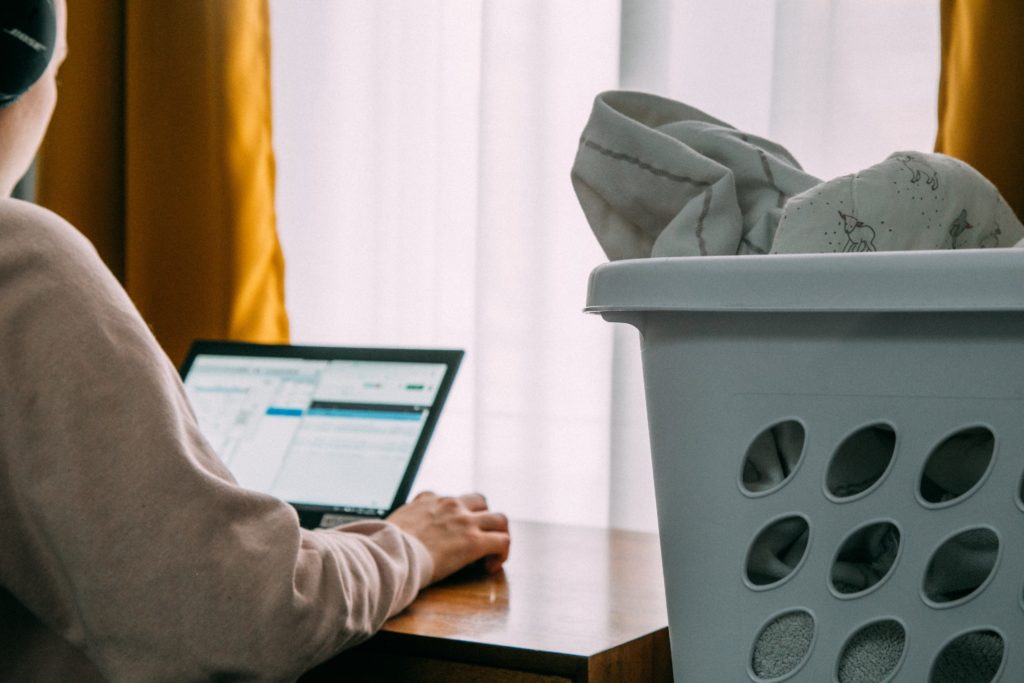
As stay-at-home orders settled over New Mexico and the United States in March, many people suddenly found themselves working from home and homeschooling their children.
Initially, energy trend spotters thought the shelter-in-place orders would lead to overall decreases in energy use and thus be a boon for the environment. An April 2020 study from IOPscience initially supported this hypothesis. It found that among 39 studies, 26 suggested working from home cut energy use through reduced work travel and office energy consumption. However, once home energy use was factored back in, the overall savings became much smaller and more unpredictable.
Energy consumption hasn’t decreased. It’s just changed locations. Now, we’re bearing the brunt of energy use at home. In the past, our homes have been relatively quiet during the day. Home energy use traditionally drops between 10 a.m. and 4 p.m. while people are at work and school. In 2020, however, this curve has changed dramatically. Now, home energy use begins rising at 5 a.m. and peaks at 4 p.m.; then it declines throughout the evening and dips the lowest overnight.
Lights are on, air conditioners are cooling, and computers are running. Although computers and small digital devices, like tablets, require relatively little energy, they’re drawing it on it most of the day as adults and children connect to meetings and online learning spaces. (There’s also a fair amount of TV use as people binge streaming services like Netflix these days, too.) All that adds up to more energy use — and greater costs for residential consumers.
Residential Energy Increases Across the U.S.
New Mexico hasn’t released official tallies on whether energy use has risen locally; however, we’ve seen increases across the country.
Californians’ residential energy use rose 15 to 20% over the same period last year, and New York City’s main utility provider has told residents to expect both higher bills and rolling blackouts due to increased output this year.
Overall, one-third of Americans can expect to see a spike in their energy bills this summer. Although estimates differ, one study from Sense projected Americans would experience a $25 per month increase in utility spending this summer. Although those increases may appear minimal to some, they’re occurring at the same time as widespread layoffs and furloughs. New Mexico’s public utilities have largely suspended residential shutoffs; however, bills and, recently, late fees are still accruing.
Energy Solutions
With growing energy use during the COVID-19 pandemic, it’s important to be mindful about how much energy your family is drawing and consider ways to decrease the associated costs.
- Unplug devices when not in use
Known as “energy vampires,” these devices draw energy when they are plugged in and not being used. These electronics include everything from coffee machines and toasters, to printers and desktop computers. If you have multiple devices in one area, install a smart power strip you can easily control the energy flow.
- Use natural light
With more than 300 days of sunshine in New Mexico, it’s easy to find natural light. Find areas of your home where you can utilize natural light instead of overhead lighting or lamps. Set up your workstation or a desk for your children there to take advantage of that light.
- Opt for energy-efficient equipment
If you’re setting up a home office for the first time, select Energy Star–certified office equipment, which utilizes about half the energy that standard office equipment does. Also, desktops use far more energy than laptops. Once you have that equipment, make sure it’s set up to maximize energy savings. Many printers, desktops, and laptops have automatic sleep settings that reduce energy consumption when they are not in use.
- Make adjustments to your thermostat
Using a programmable thermostat will help heat and cool your home efficiently. According to the Department of Energy, you can save up to 10% a year by turning your thermostat back for 8 hours a day, for example, while you’re sleeping. Although this is more difficult to do during the COVID-19 pandemic when you’re at home for more hours during the day, slight adjustments could pay big dividends in heating and cooling costs.
- Install solar
Every day, solar technology is becoming more accessible and providing better energy results for consumers, including for residential homeowners. Once your solar installation is complete, you can expect to see energy savings within eight weeks.
SolExergy is ready to help you find a solar solution that fits your work-from-home needs and your budget! Get in touch with us for an initial consultation.
